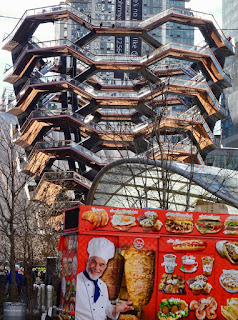
Last week, Sugarman went before the Community Board 2 State Liquor Authority Committee and promised not to change the spirit of the historic bar. “I have every intention of keeping this amazing institution the way it is,” he said. “I have no intention of making any dramatic changes.” But he also said he would raise prices and make "a little bit of a better burger."
Locals are worried this means a very different White Horse that might look the same and have the same name, but won't be welcoming or accessible to the current clientele.
Now the Stop Croman Coalition is hosting a rally for the bar, this Thursday, March 21, at 3:00. After the rally, author Malachy McCourt will hold a traditional Irish wake for the White Horse.

Is this the death of the White Horse as we know it? Locals have had plenty of reason to worry.
As I wrote in my book Vanishing New York: How a Great City Lost Its Soul, "A virulent trend has been sweeping the Village, and the city, in which upscale restaurateurs take over vintage spots, refurbish them, and turn them into exclusive locales, keeping their names and capitalizing on their history. It’s an invasion of the body snatchers. The old places look like themselves, sort of, but there’s no soul inside. The blog Grub Street called the trend 'fauxstalgia.' It first happened to the Waverly Inn and the Beatrice Inn, prompting the Times to write about the practice in 2010. The Village, they said, 'has become like a theme park of the past, as these restored standards offer a vision of a lost bohemian New York— albeit with a well-heeled clientele and prices to match.'" New York later wrote about how trendy, monied restaurateurs "seem to be in a race to acquire New York’s oldest, most storied properties."
The people who take over often speak about preserving some aspect of the places. It happened to the Minetta Tavern when its new owner told Zagat, "No one familiar with the Tavern from the past will know exactly what's changed," but it changed dramatically, with a whole new clientele. It happened to Fedora when the new owner went before CB2 and promised, according to Eater, to "keep most of the cherished design details," but the place was completely transformed. It happened to Bill's Gay 90s, almost happened to John's of 12th Street, and after it happened to Rocco's, the new owners said they were paying tribute to the old place.

We only have the past to go by and we certainly can't see the future.
Maybe Sugarman plans to approach the White Horse with a light touch. Maybe he won't close it for renovations, upscale the menu, require reservations, and hype the place to a monied clientele of foodie Instagrammers and celebs. Maybe we won't lose the White Horse as a democratic and accessible place where anyone can sit at the bar for hours, shooting the shit and getting soused (including that grizzled raconteur in the beret and camo pants with a knife hooked to his belt).
Or maybe we really do need a wake.
It looks like it'll be a wild one. Musician and composer David Amram told the Irish Central: “I will leave my composing dungeon and celebrate the White Horse of the 1950s with Malachy at 4 p.m., and we will all have a toast to Ernie’s succulent overcooked knockwursts, non-stop schmoozing between Jimmy Baldwin and Dan Wakefield, the Zola Sisters charming us all, weekends crowded with C. Wright Mills fans, moving men, ex-boxers, crazy poets and neighborhood cats and kitties, filmmakers, homemakers, and stay-awakers!!”











